Dragon-horse: the “new man” of changing Japan. (A dramatic story in several parts with a prologue and an epilogue) Part Two
Two small houses are watching
On a blooming meadow ...
(Issa)
The officer of the punitive detachment sent to Choshu, whom Sakamoto Ryoma was to meet in August 1863, was Saigo Takamori. He came from a family of samurai from Khan Satsuma, who rose only slightly above the lowest rank. In his youth, he injured his right elbow, so he could not become a warrior and decided to take control. Saigo Takamori proposed to start reforms in agriculture, and this idea was approved by the local daimyo Shimazzu Nariakira. For a man who came out of a poor family, it was a rapid career takeoff: Takamori even got the opportunity to contact the daimyo without asking permission from his entourage. However, he was lucky not just because he was lucky with Nariakira, who was probably one of the most prominent figures of that time and a very far-sighted person who decided to transform Satsuma's economy with the help of modern industry.
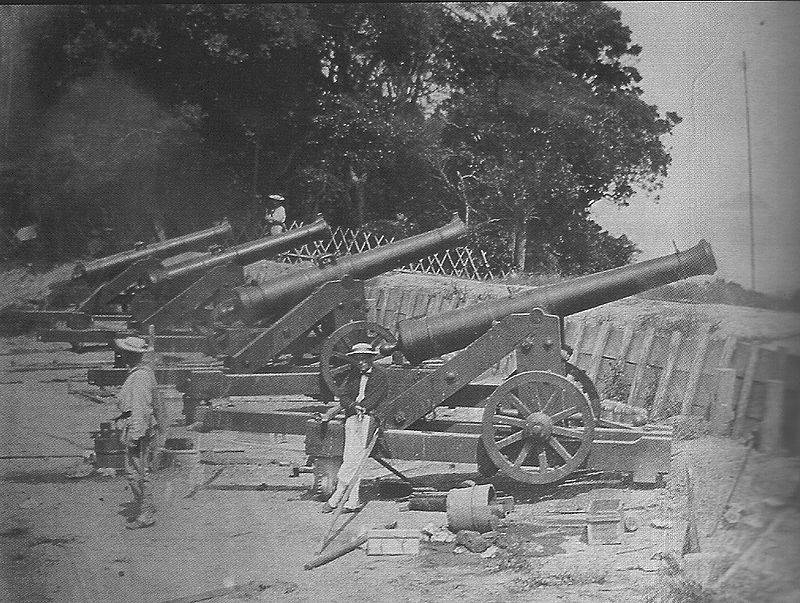
The French also played their card in Japan. French guns in Shimonoseki.
He founded a factory district, ordered to build a blast furnace, a glass factory, a mill and a factory for the production of porcelain, which in itself speaks very much.
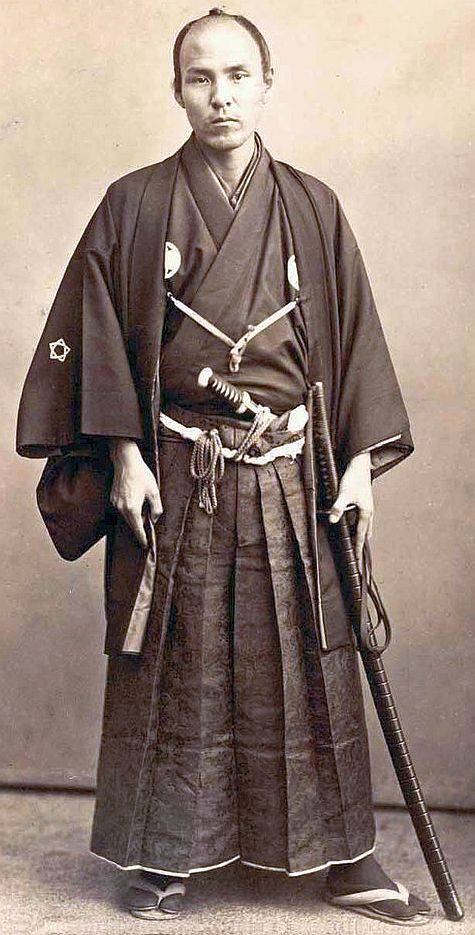
Samurai in hakama and traditional kimono.
Nariakira also intervened on the succession question after 1858’s death in the thirteenth year of Shogun Tokugawa, Iesad. He supported Hitotsubashi Keiki, who could bring, as he thought, Japan out of the crisis. But Tokugawa Yoshitomi and Iemoti were supported by a more powerful person, the supreme counselor of Ii Naosuke, so the title had to go to Iemoti. When Shimazu Nariakira died, Shimazu Khan was inherited by his nephew Hisamitsu. Saigo Takamori Nariakira’s loyalty and Keiki provoked discontent of the new ruler, he was expelled from the capital and sent to Amamioshima Island. After the murder of Ai Naosuke, Shimazzu Hisamitsu called the exile back: he needed his experience gained in Edo under the guidance of Nariakira.
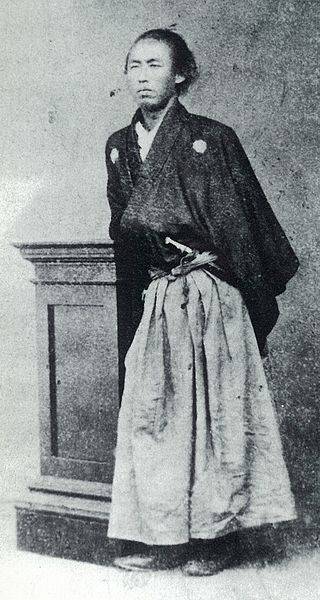
Ryoma Sakamoto
Takamori was skeptical of the new ruler as a politician. Like his uncle, Hisamitsu sought power, and for this he considered it necessary to intervene in the reforms of bakufu, but Takamori dissuaded him from coming to Edo. This advice was received with undisguised discontent. When Takamori received an order to go to Shimonoseki and announce the imminent arrival of the Khisamitsu detachment included in the punitive army, which the Bakufu was about to send to suppress extruded Tyushu, Takamori disobeyed him and went to Kyoto, hoping to negotiate with the Joi Party from Satsuma.
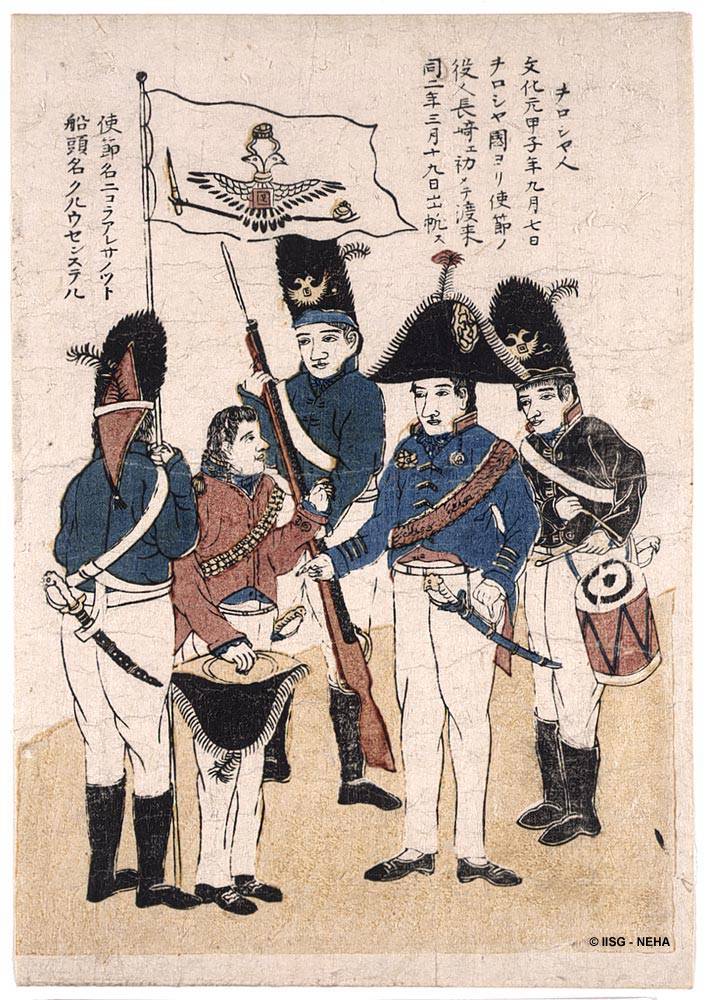
Foreign soldiers. Japanese drawing.
Nariakira and Hisamitsu were supporters of the opening of the borders of Japan, moreover, they understood that a coup d'etat at such a time was tantamount to suicide. Aware of the current threat, Hisamitsu led his own army out of Satsuma and headed for Edo. The joi members misinterpreted the course of Hisamitsu as a declaration of war against bakufu, but Hisamitsu wanted only to show bakufu his strength, and did not intend to overthrow him. By order of Hisamitsu, his entourage attacked members of the Joi Party, who settled in Terada’s inn in Kyoto, and killed several people. Takamori did not participate in this, for which he was again expelled to the island, but he ... returned from there again, since only he had connections at the same time at the emperor's court and among the members of bakufu.
He believed that bakufu generally supported the idea of reforms, it was impossible to carry them out because of the constant internal conflicts in the government. When Takamori met Sakamoto Ryoma in Osaka on the eve of his campaign in Choshu, the news from Katsu Kaisa was stunned by him: “Bakufu is like an old tree - helpless, with a rotten trunk. Powerful khans should create a new government. In these decisive days, it is pointless to pacify the Choshu - this is not the time for the khans to quarrel with each other. ” Then Ryoma told Kaisa that this letter was like a bell ringing: its sound penetrated deeply and caused a booming echo. Kaisa, listening to Ryoma's story, probably recalled that evening when he abandoned the idea of killing him.
During the first punitive campaign in Choshu, Ryoma followed Katsu Kaisu. Having barely survived the shelling of the city from foreign ships, the Choshu leaders realized that they could not resist the Bakuf’s troops, apologized and, without a moment's delay, surrendered. The former confidence immediately returned to the bakuf. Kaisu Maritime School in Kobe became a target for attacks by conservative members of the government - on the grounds that, they say, in the school, samurai were not prepared at all for serving in the bakufu. Katsu Kaisu was summoned to Edo in October 1864, and the school was closed in 1865. But Khan Satsuma was on their side, because after losing in battle with the British fleet there was an acute need for the reorganization of the naval forces.
The Danish ship "Medusa" shelled Shimonoseki. Painting by Jacob Edward van Hemskerk van Best.
Act Four: Love, a revolver, and a honeymoon trip
As she guards at the stream,
While the foal is drinking! ...
(Issa)
In May 1865, Saigo Takamori arrived in Satsuma and informed Ryom that he was planning a second punitive war against Choshu. Moreover, Takamori set out to reconcile Satsuma and Choshu, which was difficult. Satsuma sought to moderate reforms under the banner of bakufu, in Choshu - to more radical, sometimes reaching extremes. But neither of them wanted a revolution. They did not want to lose their high position.
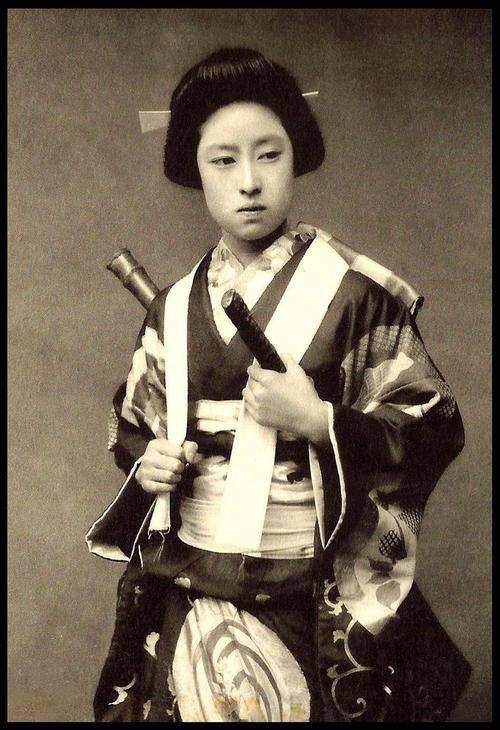
Onna-scare.
At that time, in order to engage in politics, a lot of money was needed for a bribe, which was considered to be in the order of things. In order to extract them, Ryoma founded the Kameyamasatu trading company in Nagasaki, later renamed Kayentai. It is appropriate to say that he did it not only for the sake of money. He still liked and wanted to trade. And to trade not so much inside Japan, as with the whole world. Well, he was so inquisitive. After the first punitive war, foreigners were strictly forbidden to sell bakuf against Choshu weapon heads of khans. Ryoma’s company purchased a small batch of weapons from the English merchant Thomas Glover and sold it to Choshu. Communication with Choshu after that became much stronger and, in the end, Katsura Kogoro agreed to a meeting with Takamori. In January, Kogoro 1866 entered the gate of Satsuma’s residence in Kyoto.
Those who met clearly lacked western straightforwardness. In the conversation, Takamori and Kogoro did not touch on political issues, even the most important ones, and, most likely, Takamori did not offer to form an alliance, expecting that Kogoro would ask for his help from him. Kogoro remembered that it was Takamori who invited him to Kyoto, but he believed that if Takamori did not speak of the alliance, it means that it is not worth remembering about him. These are the Japanese, and there's nothing you can do. The deadlock situation lasted as many as ten completely fruitless days, until Kogoro finally began to gather, preparing to leave. Sakamoto Ryoma visited him and chided for excessive self-esteem to the detriment of the interests of the country. Kogoro replied that Choshu was nearly destroyed by vindictive bakufu and the ships of the four Western powers. Choshu needs help to hold out, but they wouldn’t care about their fate if they knew that Satsuma was also determined to destroy Baku. Ryoma perfectly understood Kogoro's fears and convinced Takamori to meet him again, talk, and most importantly, make an alliance. Thus, it was thanks to Sakamoto Ryoma that an agreement was finally concluded between Satsuma and Choshu. The six points of the secret agreement signed in January 1866, said that his main goal - the destruction of the Shogunate Tokugawa.
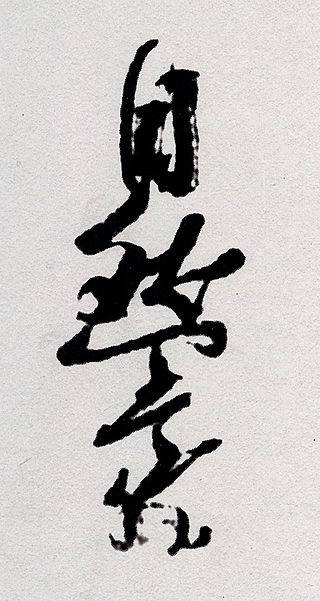
Signature Sakamoto Ryoma.
When Ryoma was at Terada’s inn the next evening, Fushimi police detachment arrived there to arrest him. The fact is that over the past few months, agents of the conservative part of Bakufu have secretly followed him. Finally, the agents reported that something obviously important had happened, and therefore Ryom's order to "take" came immediately. Meanwhile, he and his friend Miyoshi Sind-zo sat in a room on the second floor and discussed an important achievement - the conclusion of the Choshu and Satsuma union. And it was here that the adoptive daughter of the inn owner, Oryu, broke into their room to warn them about the raid: she was washing downstairs, and in the window she saw police approaching with spears and lanterns. Oryu did not belong to the samurai class, and it was impossible to say about her that she was onna-fear and by birth and upbringing. But she apparently genuinely loved Ryoma and was ready for many things for his sake.
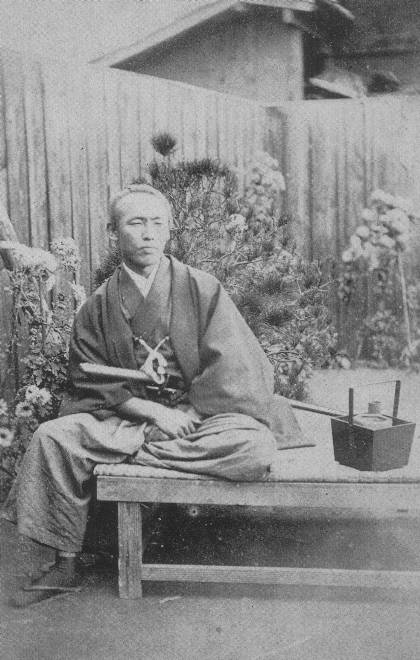
Sakamoto Ryoma.
It must be said that many then respected Ryom not only for his mind - well, is there not enough intelligent people in the world? No, in Japan, people like him were respected also because they perfectly mastered the art of sword fighting, that is, they had a difficult school. Some well-known people knew about everyone who had studied, who had mastered the style of the sword, and this was a kind of calling card - that’s supposedly who you are dealing with. However, Ryoma was surprised everyone here, as he was probably one of the first to replace the sword with a “noisy barbarians” revolver, which also impressed many people.
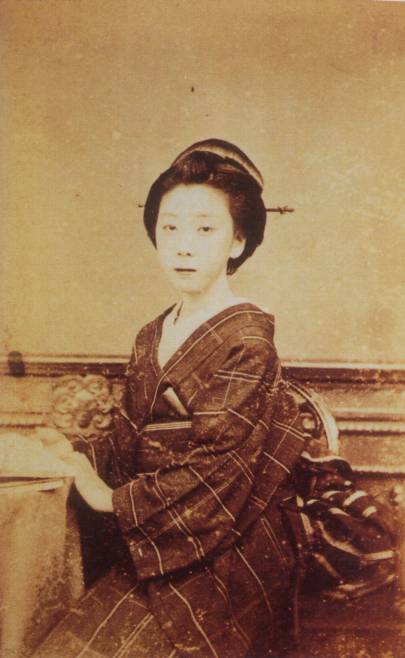
Oryu Ryo is the wife of Sakamoto Ryoma.
Oryu appeared in the upper room and managed to warn him about the danger, but he managed to throw his kimono on her and snatch a six-shooter revolver. It was then that the police poured into the room, and Ryoma met them with shots and shot one of the attackers. Then, together with Shinzo, taking advantage of the confusion, he escaped through the backyard, and, winding between the illuminated walls and paper partitions in the neighboring houses, managed to safely get out into the street. Soon a squad from Satsuma arrived to help friends; and the wounded Ryoma was hidden in the Satsuma residence in Kyoto. After this incident, Ryoma and Oryu got married and decided to celebrate this important event by going to Kyushu (they were probably the first newlyweds in Japan to celebrate their honeymoon in the western style!).
To be continued ...
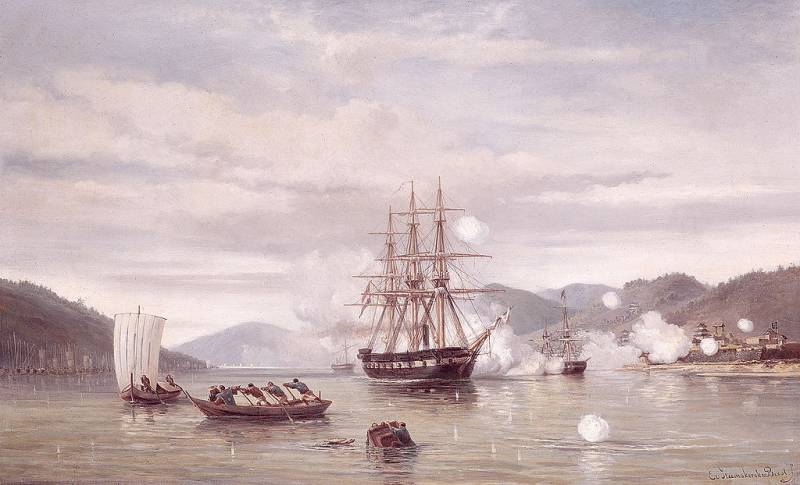
Information